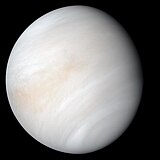Файл:PIA23791-Venus-RealAndEnhancedContrastViews-20200608 (cropped).jpg
Внешний вид

Водзвыв видзӧдӧмлӧн ыдждаыс:600 × 600 пиксель. Мукӧд стӧчлун: 240 × 240 пиксель | 480 × 480 пиксель | 768 × 768 пиксель | 1096 × 1096 пиксель.
Подув файл (1096 × 1096 пиксель, файл ыджда: 30 КБ, MIME сикас: image/jpeg)
Файл история
Личкы кадпас/кад, медым аддзыны файллысь сэкся версия.
| Кадпас/Кад | Миниатюра | Ыджда | Вӧлысь | Пасйӧд | |
|---|---|---|---|---|---|
| ӧнія | 23:40, 9 сора т. 2020 |  | 1096 × 1096 (30 КБ) | PhilipTerryGraham | File:PIA23791-Venus-RealAndEnhancedContrastViews-20200608.jpg cropped 51 % horizontally using CropTool with precise mode. |
Ыстӧдъяс
Тайӧ файлын вӧдитчӧма татшӧм лист бокӧн :
Файлнас глобальнӧя вӧдитчӧм
Тайӧ файлӧн вӧдитчӧны мукӧд викиын:
- Вӧдитчӧны ary.wikipedia.org-ын
- Вӧдитчӧны arz.wikipedia.org-ын
- Вӧдитчӧны ast.wikipedia.org-ын
- Вӧдитчӧны as.wikipedia.org-ын
- Вӧдитчӧны awa.wikipedia.org-ын
- Вӧдитчӧны azb.wikipedia.org-ын
- Вӧдитчӧны az.wikipedia.org-ын
- Вӧдитчӧны ban.wikipedia.org-ын
- Вӧдитчӧны bat-smg.wikipedia.org-ын
- Вӧдитчӧны ba.wikipedia.org-ын
- Вӧдитчӧны bcl.wikipedia.org-ын
- Вӧдитчӧны be-tarask.wikipedia.org-ын
- Вӧдитчӧны be.wikipedia.org-ын
- Вӧдитчӧны bew.wikipedia.org-ын
- Вӧдитчӧны bg.wikipedia.org-ын
- Вӧдитчӧны bh.wikipedia.org-ын
- Вӧдитчӧны bjn.wikipedia.org-ын
- Вӧдитчӧны bn.wikipedia.org-ын
- Вӧдитчӧны bo.wikipedia.org-ын
- Вӧдитчӧны br.wikipedia.org-ын
- Вӧдитчӧны bs.wikipedia.org-ын
- Вӧдитчӧны btm.wikipedia.org-ын
- Вӧдитчӧны bxr.wikipedia.org-ын
- Вӧдитчӧны ca.wikipedia.org-ын
- Вӧдитчӧны cdo.wikipedia.org-ын
- Вӧдитчӧны ceb.wikipedia.org-ын
- Вӧдитчӧны ce.wikipedia.org-ын
- Вӧдитчӧны chr.wikipedia.org-ын
- Вӧдитчӧны ckb.wikipedia.org-ын
- Вӧдитчӧны co.wikipedia.org-ын
- Вӧдитчӧны crh.wikipedia.org-ын
- Вӧдитчӧны cr.wikipedia.org-ын
- Вӧдитчӧны csb.wikipedia.org-ын
- Вӧдитчӧны cs.wikipedia.org-ын
- Вӧдитчӧны cu.wikipedia.org-ын
- Вӧдитчӧны cv.wikipedia.org-ын
- Вӧдитчӧны cy.wikipedia.org-ын
- Вӧдитчӧны dag.wikipedia.org-ын
- Вӧдитчӧны da.wikipedia.org-ын
- Вӧдитчӧны de.wikipedia.org-ын
- Вӧдитчӧны dga.wikipedia.org-ын
- Вӧдитчӧны din.wikipedia.org-ын
- Вӧдитчӧны diq.wikipedia.org-ын
- Вӧдитчӧны dsb.wikipedia.org-ын
- Вӧдитчӧны dty.wikipedia.org-ын
- Вӧдитчӧны el.wikipedia.org-ын
Видзӧдлыны тайӧ файлӧнбыдлаын вӧдитчӧмсӧ.




